Search Results
Filters
Advanced Search
2145 Results
-

How Formal Reduces Fault Analysis for ISO 26262
Conference - Mar 27, 2018 by Doug Smith
In this session, you will learn how Formal reduces fault analysis for ISO 26262 with advanced techniques that eliminate large numbers of irrelevant faults without compromising the completeness of the verification, or the safety of the finished product.
-

Requirement Tracing in the ISO 26262 World
Webinar - Mar 27, 2018 by Charles Battikha
In this session, you will learn about requirement tracing in ISO 26262 and the basics of the ISO 26262 standard as it applies to requirements for electronic design & verification of safety critical products.
-

ISO 26262: Compliant Verification From Analysis to Fault Campaigns
Conference - Mar 27, 2018 by Doug Smith
In this session, you will gain an understanding of the core mission, scope, and key concepts of ISO 26262 for automotive functional safety, analysis, and fault campaigns.
-

Block Level Testbench
Chapter - Mar 24, 2018 by Verification Methodology Team
As an example of a block level testbench, consider a testbench built to verify a SPI Master DUT.
-
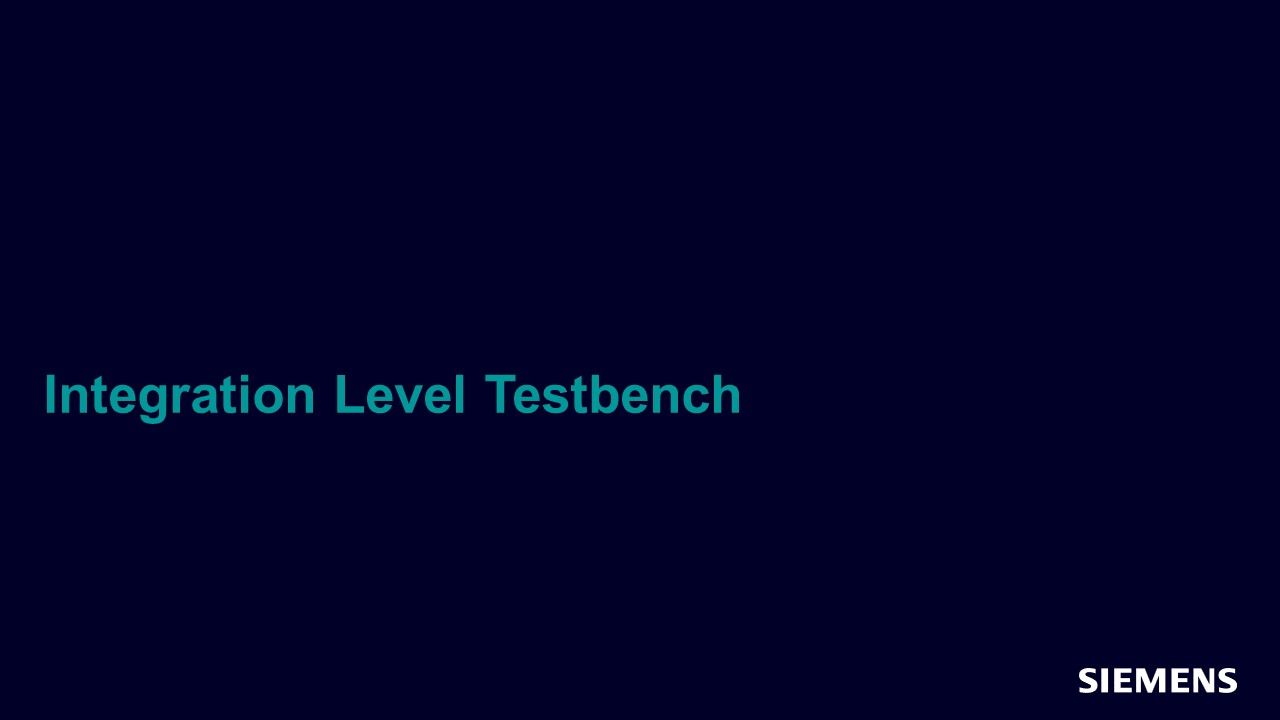
Integration Level Testbench
Chapter - Mar 23, 2018 by Verification Methodology Team
This testbench example is one that takes two block level verification environments and shows how they can be reused at a higher level of integration.
-
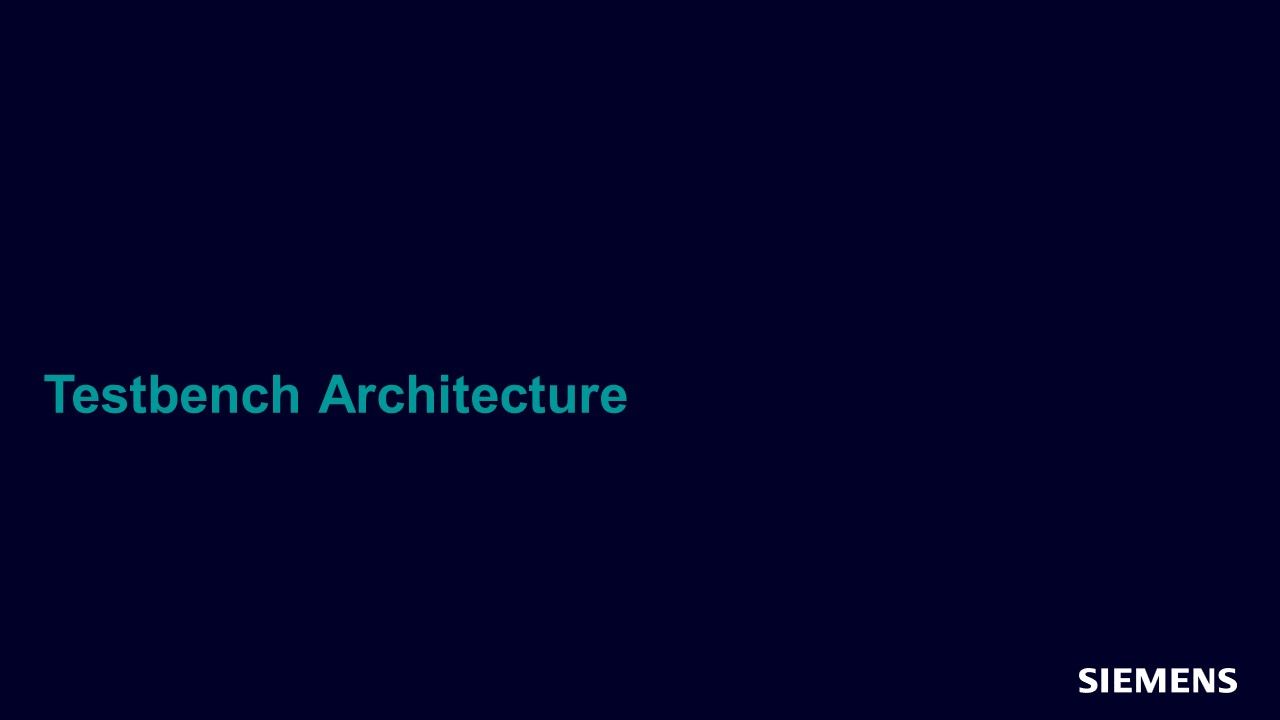
Testbench Architecture
Chapter - Mar 21, 2018 by Verification Methodology Team
This chapter covers the basics and details of UVM testbench architecture, construction, and leads into other chapters covering each of the constituent parts of a typical UVM testbench.
-
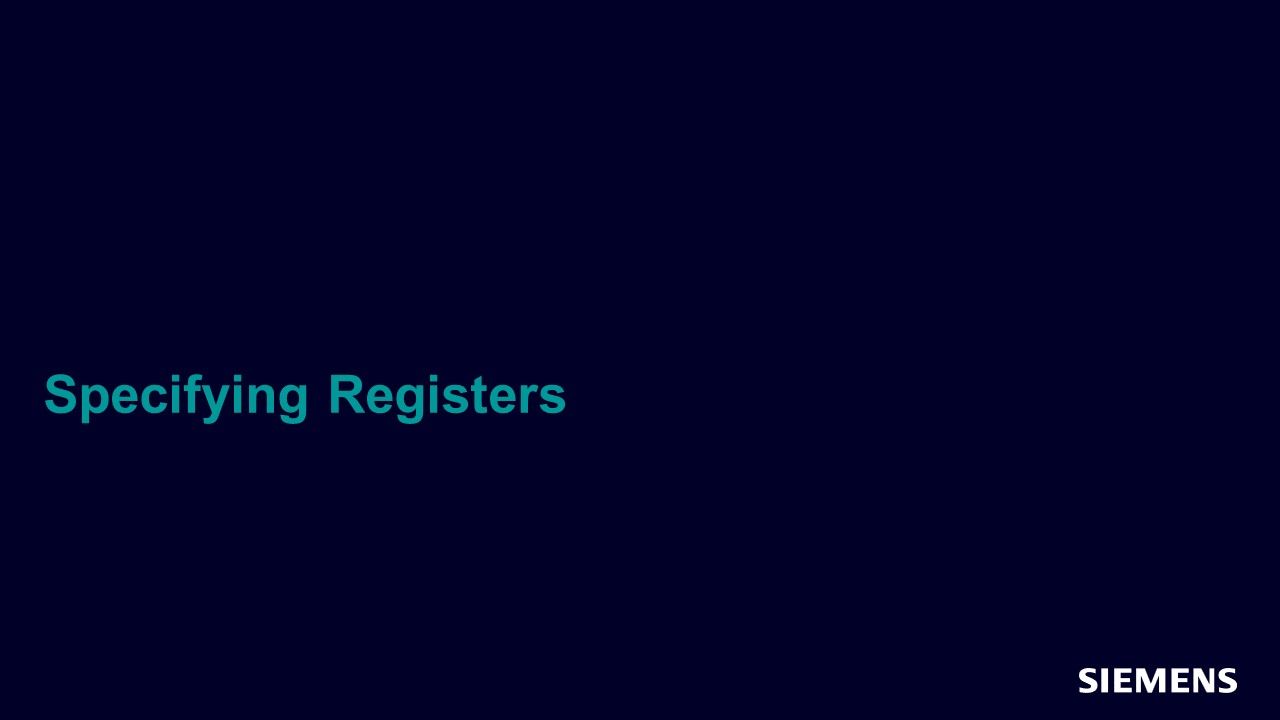
Specifying Registers
Chapter - Mar 18, 2018 by Verification Methodology Team
Hardware functional blocks connected to host processors are managed via memory mapped registers.
-
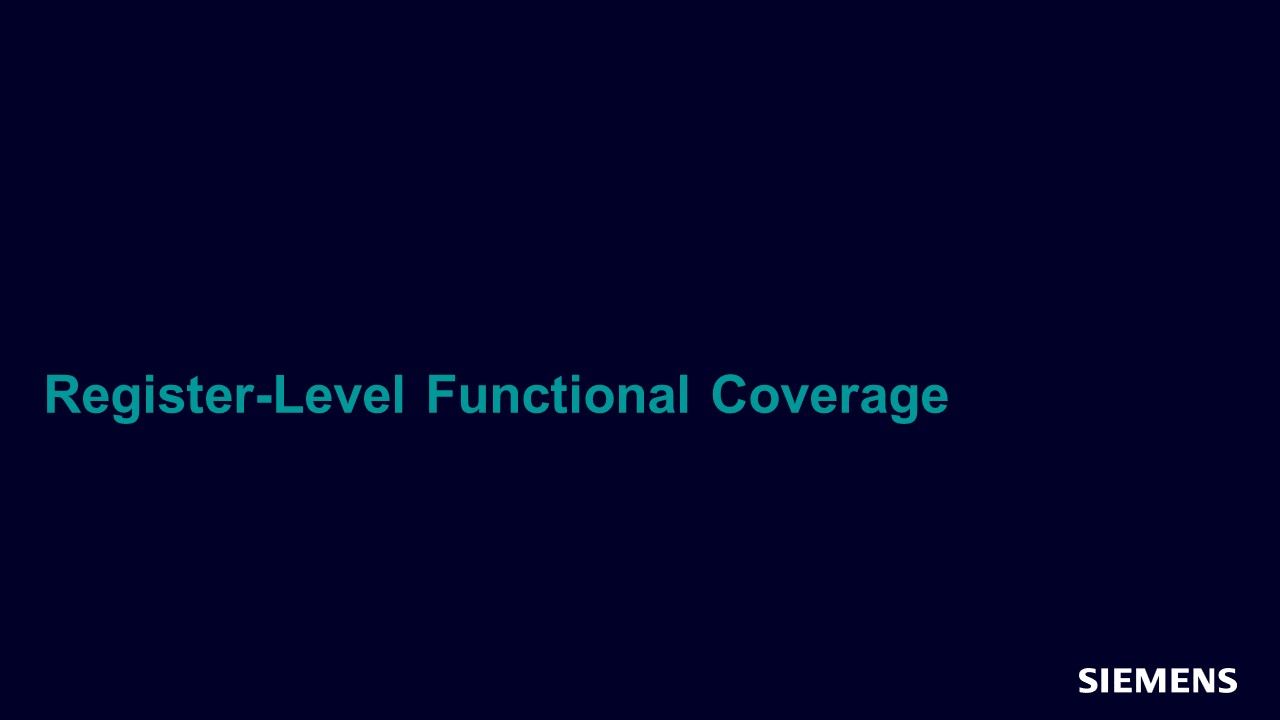
Register-Level Functional Coverage
Chapter - Mar 18, 2018 by Verification Methodology Team
The UVM supports the collection of functional coverage based on register state in three ways:
-
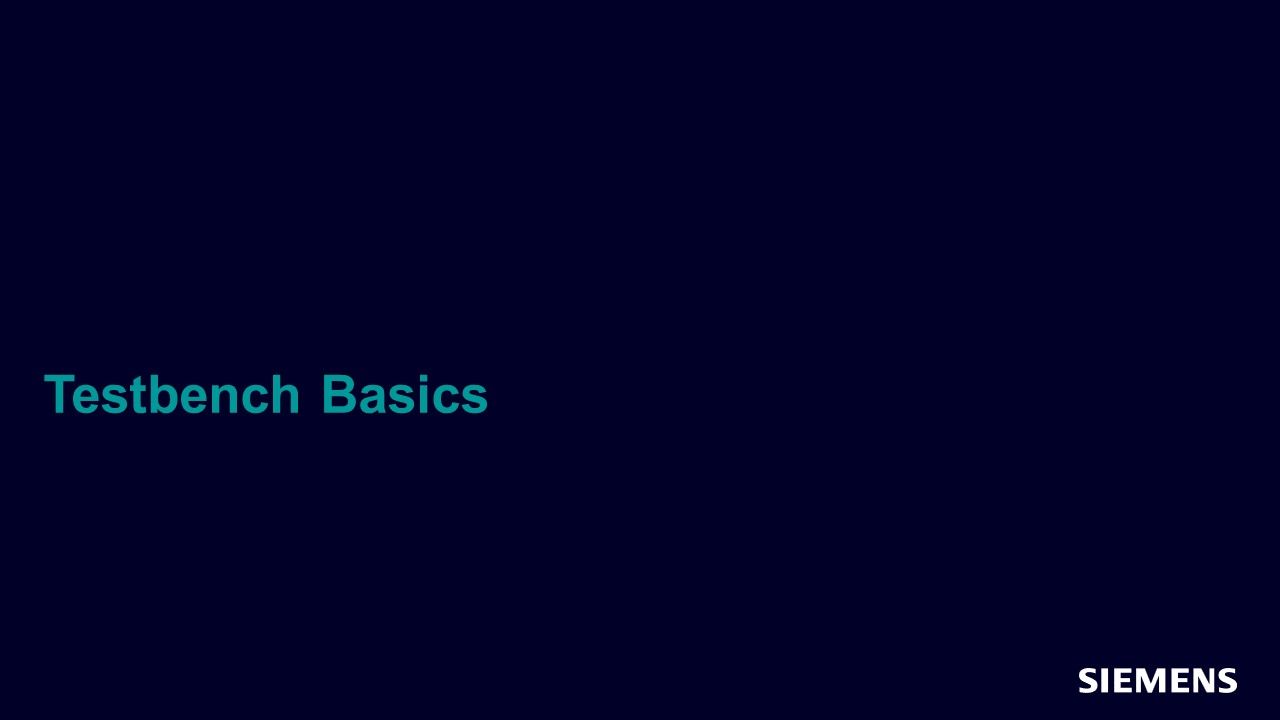
Testbench Basics
Chapter - Mar 15, 2018 by Verification Methodology Team
Before we can get into discussing the recipes presented in the UVM Cookbook, we have to make sure that we're all talking about the same ingredients. This chapter introduces the UVM concepts that the reader should know in order to understand the recipes presented herein. This section will be incredibly valuable to new UVM users, but experienced UVM users may be able to just straight to the UVM Testbench chapter.
-

Interfaces and Virtual Interfaces
Chapter - Mar 15, 2018 by Verification Methodology Team
The SystemVerilog interface provides a convenient means of organizing related signals into a container in order to simplify connections between modules.
-
UVM Cookbook
Resource (Cookbook) - Mar 15, 2018 by Verification Methodology Team
The UVM Cookbook conforms to the IEEE 1800.2 UVM Standard and promotes an emulation-friendly UVM testbench architecture that promotes reuse of your UVM environment as your project moves from simulation to emulation and beyond.
-
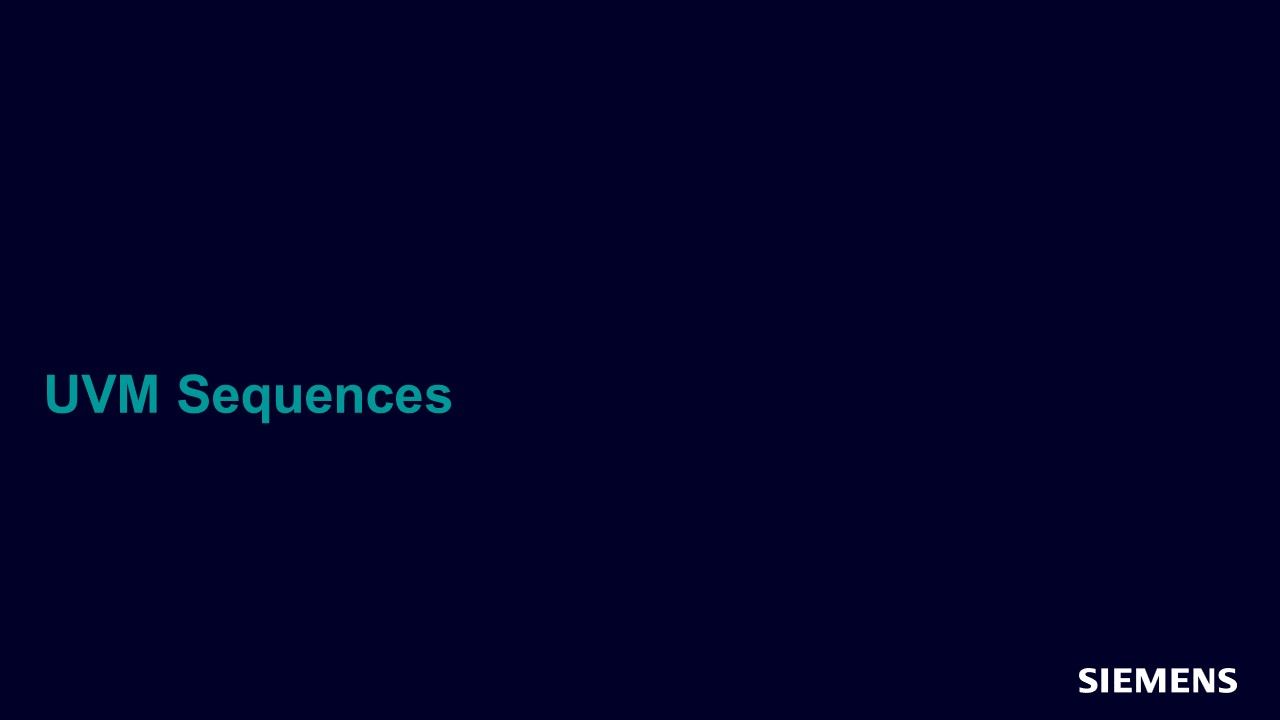
UVM Sequences
Chapter - Mar 15, 2018 by Verification Methodology Team
In testbenches written in traditional HDLs like Verilog and VHDL, stimulus is generated by layers of sub-routine calls which either execute time consuming methods (i.e. Verilog tasks or VHDL processes or procedures) or call non-time consuming methods (i.e. functions) to manipulate or generate data.
-

UVM Configuration Database
Chapter - Mar 15, 2018 by Verification Methodology Team
The uvm_config_db is a UVM utility class that is used to pass configuration data objects between component objects in a UVM testbench.
-
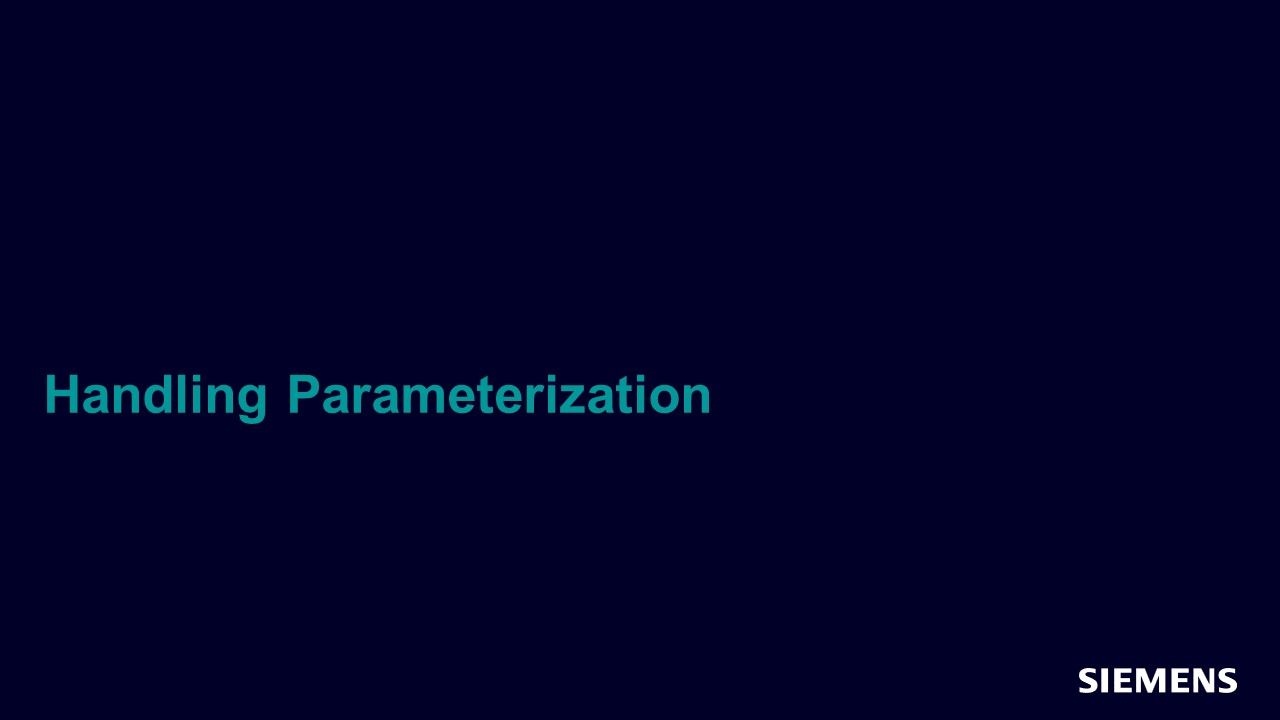
Handling Parameterization
Chapter - Mar 15, 2018 by Verification Methodology Team
Parameters are commonly used to configure design IP and interfaces. From the perspective of VIP, parameters usually affect the width of bus fields or the number of channels or lanes in use.
-
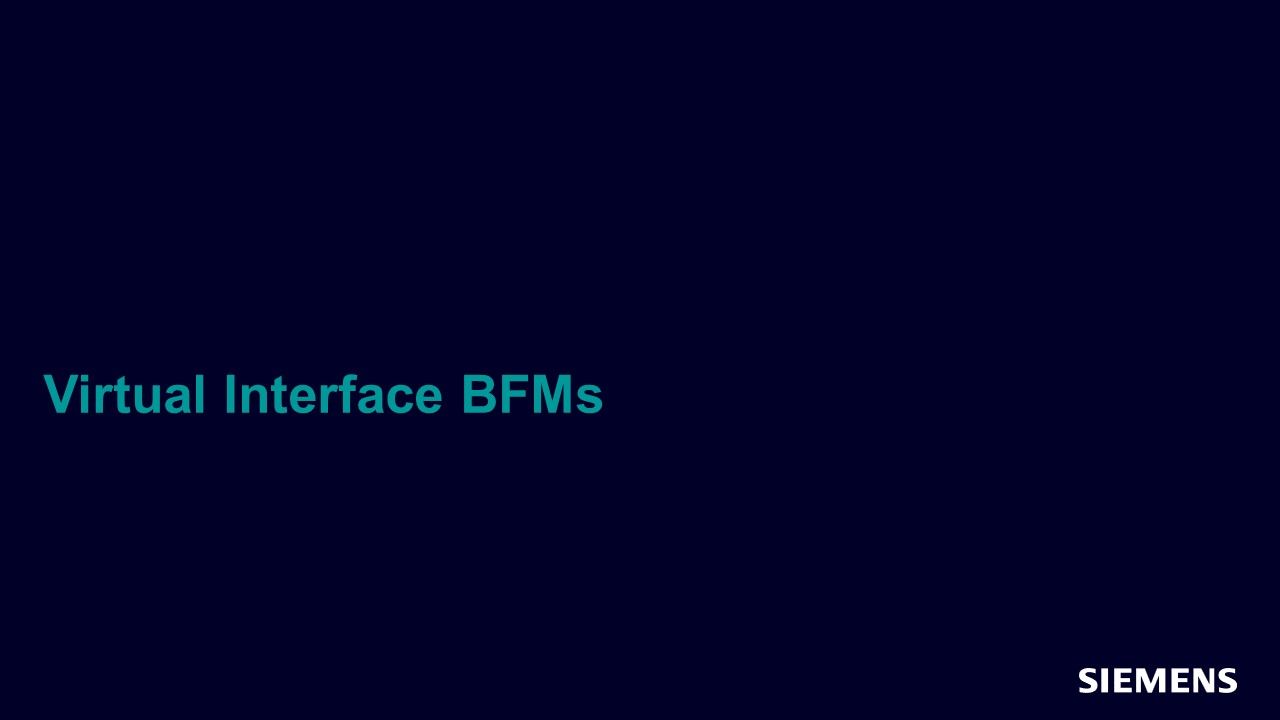
Virtual Interface BFMs
Chapter - Mar 15, 2018 by Verification Methodology Team
In order to make verification components reusable between testbenches they are organized as uvm_agents with an associated signal interface. These are also referred to as UVCs (Universal Verification Components).
-

Abstract-Concrete Class Connections
Chapter - Mar 15, 2018 by Verification Methodology Team
An alternative to using a virtual interface handle for DUT to UVM testbench connections is to use an abstract concrete class pair.
-
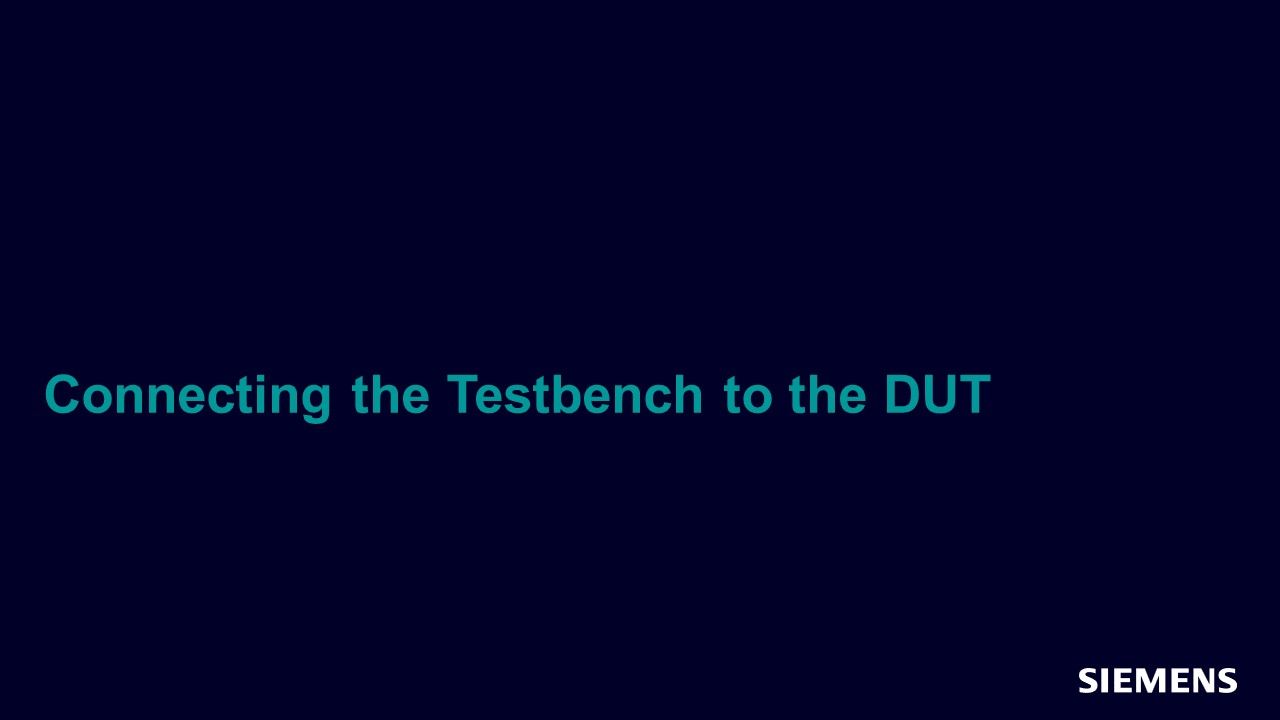
Connecting the Testbench to the DUT
Chapter - Mar 15, 2018 by Verification Methodology Team
Learn all about connecting a DUT to a UVM testbench.
-

Messaging in Sequences
Chapter - Mar 12, 2018 by Verification Methodology Team
Sequences typically use messaging, either for debug, traceability or to report on the outcome of a built-in checking mechanism.
-

Messaging
Chapter - Mar 12, 2018 by Verification Methodology Team
The UVM messaging system provides an infrastructure for printing messages in a consistent format from a UVM testbench
-

UVM Report Catcher
Chapter - Mar 12, 2018 by Verification Methodology Team
There are situations where you may need to change a message generated by the messaging system, and the uvm_report_catcher is built-in call-back mechanism for doing this.
-

Command-Line Verbosity Control
Chapter - Mar 12, 2018 by Verification Methodology Team
There are several UVM plusargs that can be used to control messaging verbosity, actions and severity from the command line.
-
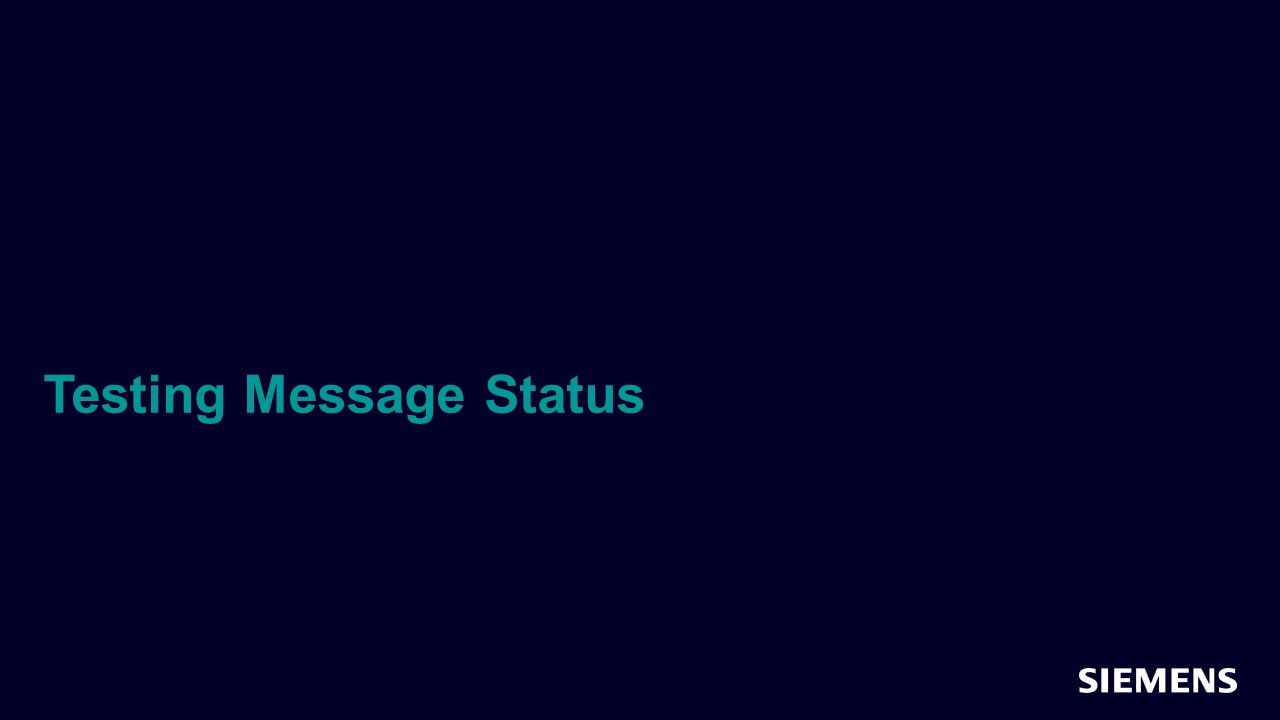
Testing Message Status
Chapter - Mar 12, 2018 by Verification Methodology Team
At the end of a UVM simulation, the report server issues a messaging summary to the transcript of the simulation.
-

Using Messaging
Chapter - Mar 12, 2018 by Verification Methodology Team
The recommended way to use the UVM messaging system is to use the message macros, since they automatically insert the file name and line number of the message source into the UVM message string which is useful for debugging
-
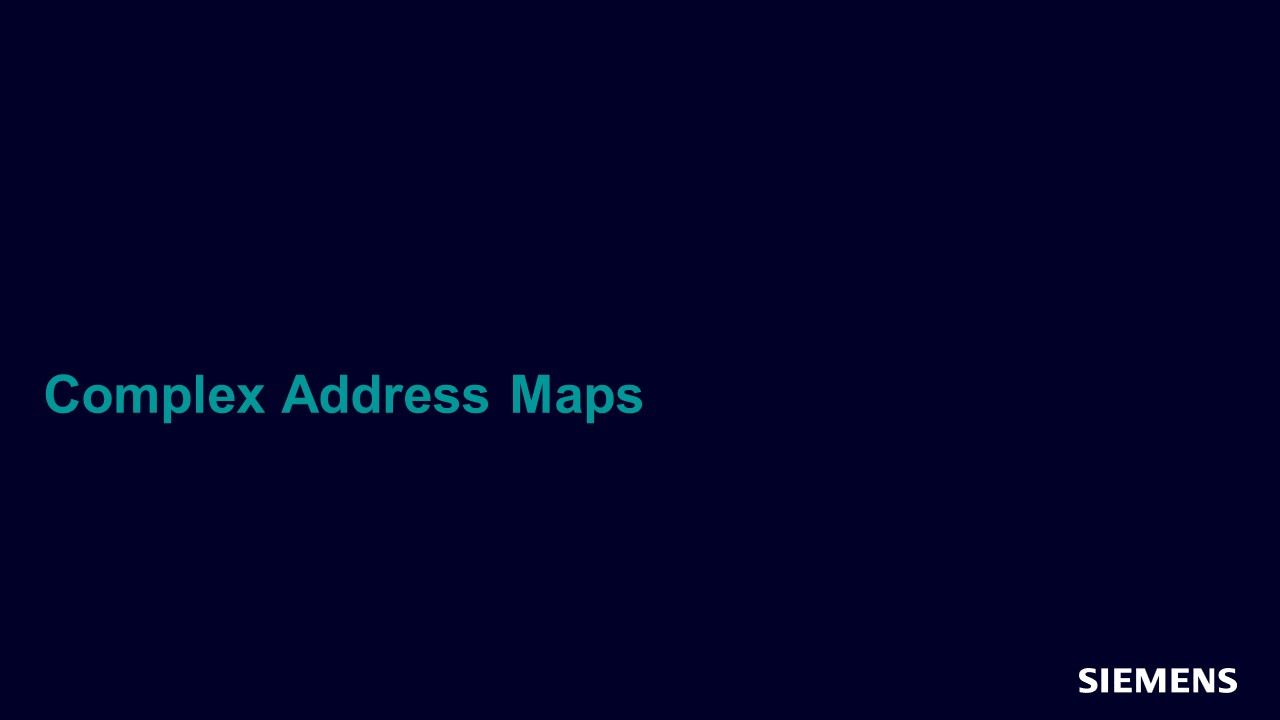
Complex Address Maps
Chapter - Mar 09, 2018 by Verification Methodology Team
In SoC design, the address mapping of registers and memory is often more complex than a single map.
-
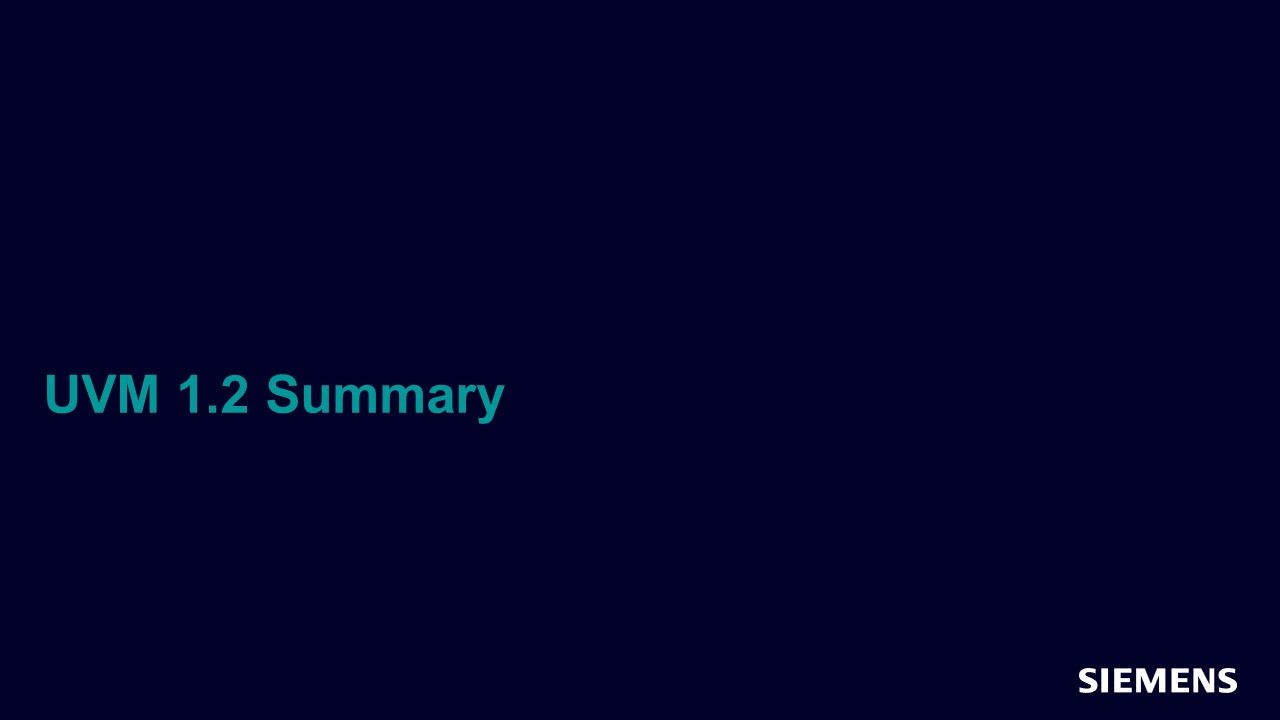
Accellera UVM 1.2 Summary
Chapter - Mar 09, 2018 by Verification Methodology Team
Cookbook topics which link to this page are affected by backwards compatibility issues or migration issues, when the Accellera UVM1.2 release is used